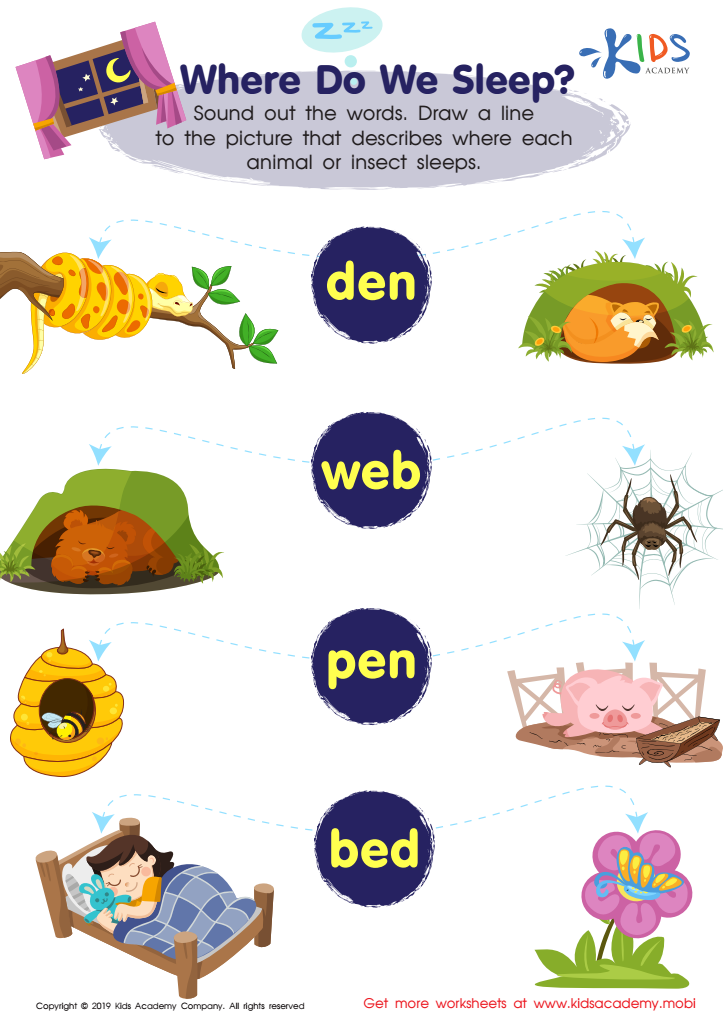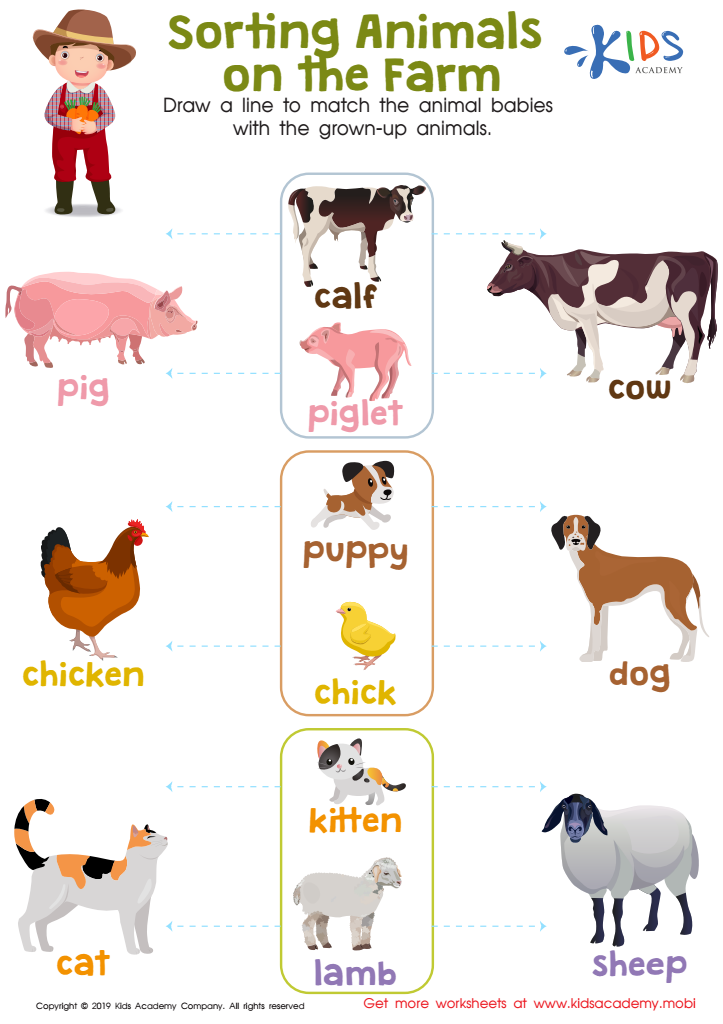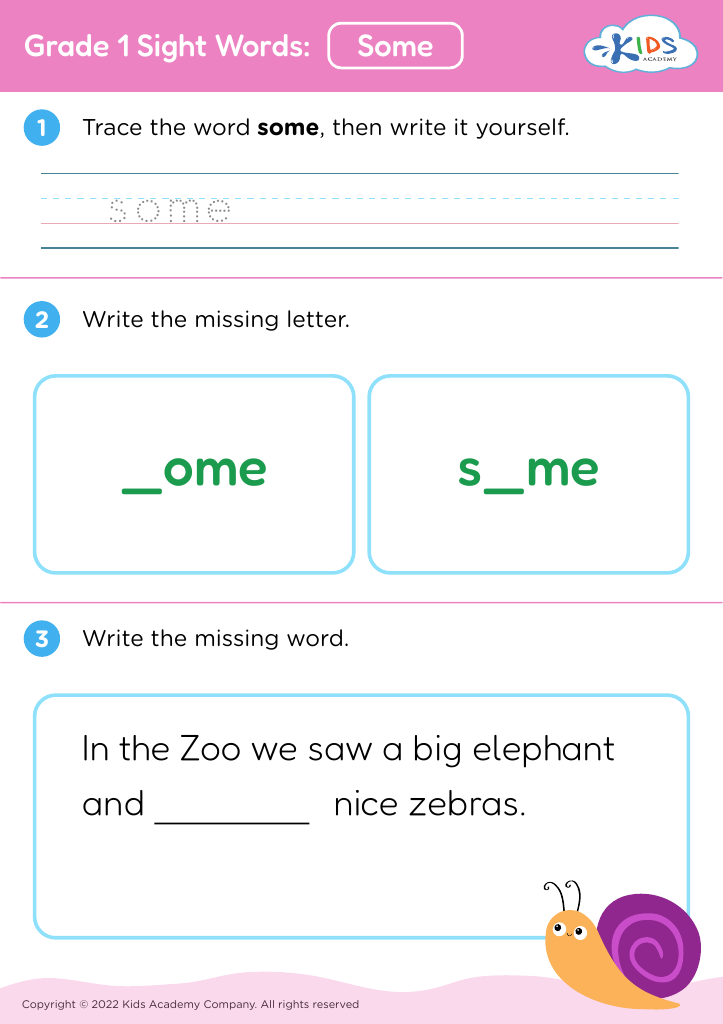Understanding habitats Reading Worksheets for Ages 4-6
3 filtered results
-
From - To
Explore the fascinating world of habitats with our "Understanding Habitats" reading worksheets designed specifically for young learners aged 4-6. These engaging worksheets help children discover various habitats such as forests, oceans, and deserts, nurturing their reading comprehension and vocabulary skills. With vibrant illustrations and simple texts, children will gain insight into the unique characteristics of each environment and the animals that inhabit them. Ideal for preschool and early elementary education, these worksheets foster a love for nature while making learning fun! Equip your little ones with essential reading skills through interactive activities that inspire curiosity about the world around them.


Where Do We Sleep Worksheet


Sorting Animals on the Farm Worksheet
Understanding habitats is crucial for children ages 4-6 as it lays the foundation for their environmental awareness and appreciation of the natural world. At this age, children are naturally curious and eager to explore their surroundings. Introducing the concept of habitats through engaging reading materials sparks their imagination and deepens their understanding of where animals and plants live, thrive, and interact.
When parents and teachers promote reading about habitats, they encourage critical thinking. Children learn about ecosystems, food chains, and the interdependence of living organisms. This knowledge fosters empathy and a sense of responsibility towards wildlife and the environment.
Moreover, reading about habitats can enhance vocabulary and language skills. Children encounter new words related to nature and gain the ability to express their thoughts more clearly. Stories about various habitats also reinforce cultural diversity; children gain insights into how different communities interact with their environments.
Additionally, such knowledge can lead to lifelong habits of environmental stewardship. When children understand the importance of protecting habitats, they are more likely to become engaged, conscious citizens as they grow. In summary, emphasizing the importance of habitats through reading nurtures well-rounded, environmentally-conscious individuals in our young learners.

 Assign to My Students
Assign to My Students








.jpg)













